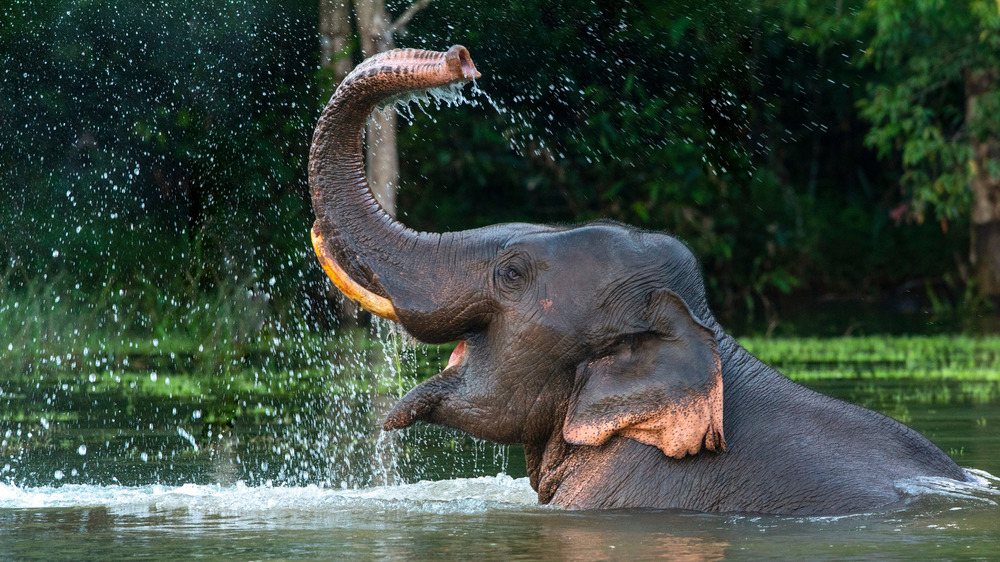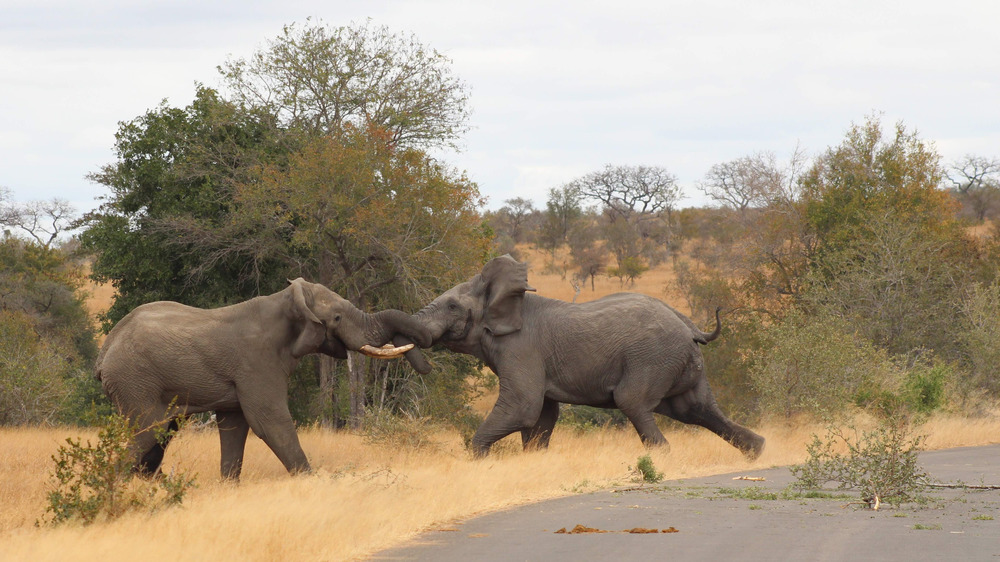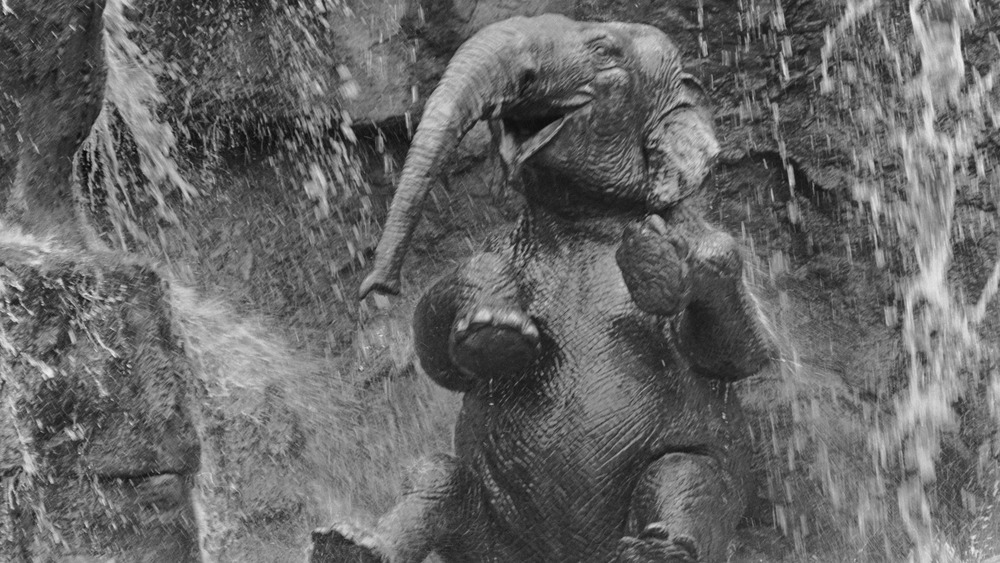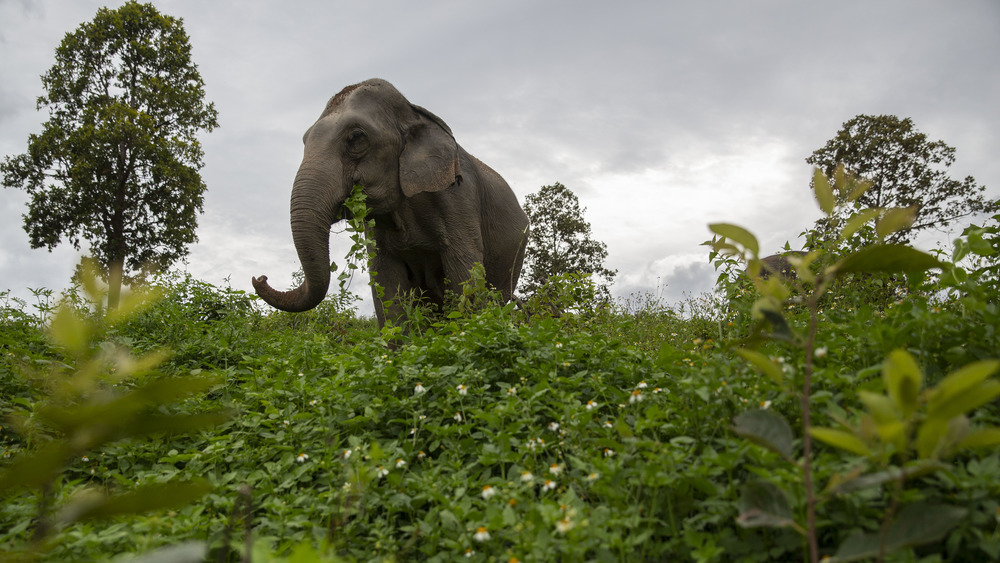What Really Happened When Scientists Gave An Elephant Too Much LSD
Humans have done some weird and awful things to animals, but poor Tusko really had no idea what he was getting into when the humans picked him up from Oklahoma City Zoo in 1962. The experiment lasted less than two hours, and by the end Tusko was dead and scientists had decided that elephants were incredibly sensitive to LSD.
Other than attempting to induce musth in an elephant with LSD, very little about this science experiment was actually scientific. The two head researchers knew little to nothing about elephants or LSD, and it's little wonder the multiple injections of LSD, Thorazine, and tranquillizers were fatal to Tusko.
Unfortunately, there are no statues or monuments to Tusko and few know of his sacrifice. And while Tusko wasn't the only animal given LSD by Americans during the 1960s, his story undoubtedly had the most tragic ending. This is the story of what really happened when scientists gave an elephant too much LSD.
Why did scientists give Tusko LSD?
During mating seasons, male Asian elephants exhibit a behavior known as "musth," pronounced "must." According to Zoos' Print Journal, lasting from between 15 to 90 days, during musth there's a large increase in reproductive hormone levels and the elephant's behavior also becomes highly aggressive. The temporal gland releases a brown discharge that changes during the course of musth and is thought to send "differentially directed messages." During musth, elephants will often drive all animals and people away, often attacking inanimate objects as well. However, most of the time will be spent "in apparently aimless rhythmic oscillations of head and neck with the trunk raised high."
According to Dangerous Minds, since musth in elephants caused them to go on a rampage, the scientists thought that if LSD could provoke a similar reaction in elephants, then perhaps it could also do so with humans. There was also some interest in learning how musth worked in order to prevent it in zoos, since little is understood about musth and the most docile elephants could suddenly become violent. Since "musth is a physiological condition, there is no particular pattern of treatment."
What happened to Tusko?
On August 3, 1962, Dr. Louis Jolyon West, Dr. Chester M. Pierce, and Mr. Warren Thomas tried to use LSD to induce musth in a three-ton elephant named Tusko at the University of Oklahoma. Although it's never been confirmed that this was part of the CIA's MK Ultra program, which included dosing unknowing people with LSD, West "has repeatedly been linked" to MK Ultra.
According to the Illinois Science Council, the scientists injected Tusko with 297 milligrams of LSD. For comparison, in humans it takes roughly 0.02 to 0.03 milligrams of LSD (or 20-30 micrograms) to induce hallucinations and the dosage given to Tusko was roughly "25 times the [proportional] dose needed to induce hallucinations in humans." Although the researchers knew this was an absurdly high dose, they guessed (incorrectly) that the elephant wouldn't be as sensitive to LSD as humans are.
Unfortunately, Tusko reacted almost immediately, acting as though he'd been stung by a bee. After trumpeting around for five minutes in distress, Tusko fell over, lost control of his bowels, and began seizing. In response, 2,800 milligrams of an antipsychotic was administered with little effect. Tusko was then given an injection of a barbiturate, but he remained on his side shaking and breathing heavily for an hour and a half before passing away. Writing about the experiment in Science, they noted that elephants are "highly sensitive to the effects of LSD," despite the fact that it was likely the obscene dosages and combination of drugs that killed Tusko.
When an elephant trips correctly
Twenty years later in 1984, Ronald K. Siegel of UCLA decided to repeat the experiment to determine whether or not LSD was actually responsible for Tusko's death. Using a male and female elephant, according to Dangerous Minds, Siegel lowered the dosage to a reasonable amount (0.003mg/kg for one elephant and 0.1mg/kg for the other), in addition to changing the different delivery method. Rather than injecting the elephants, the LSD was mixed in with water, which gave the elephants a chance to administer it at their own pace.
Not only did the elephants survive, but they "didn't seem too upset at all" and exhibited similar tripping symptoms as humans. They made "strange vocalizations such as chirping and squeaking" and were moving more slowly than usual, but after a few hours they were back to normal.
Since Siegel noted that Tusko had received an obscenely high dose of LSD, he couldn't conclude definitively that the LSD played no cause in his death. However, Siegel was able to prove that LSD doesn't invoke musth in elephants, proving that Pierce and West's original hypothesis was definitely incorrect.



